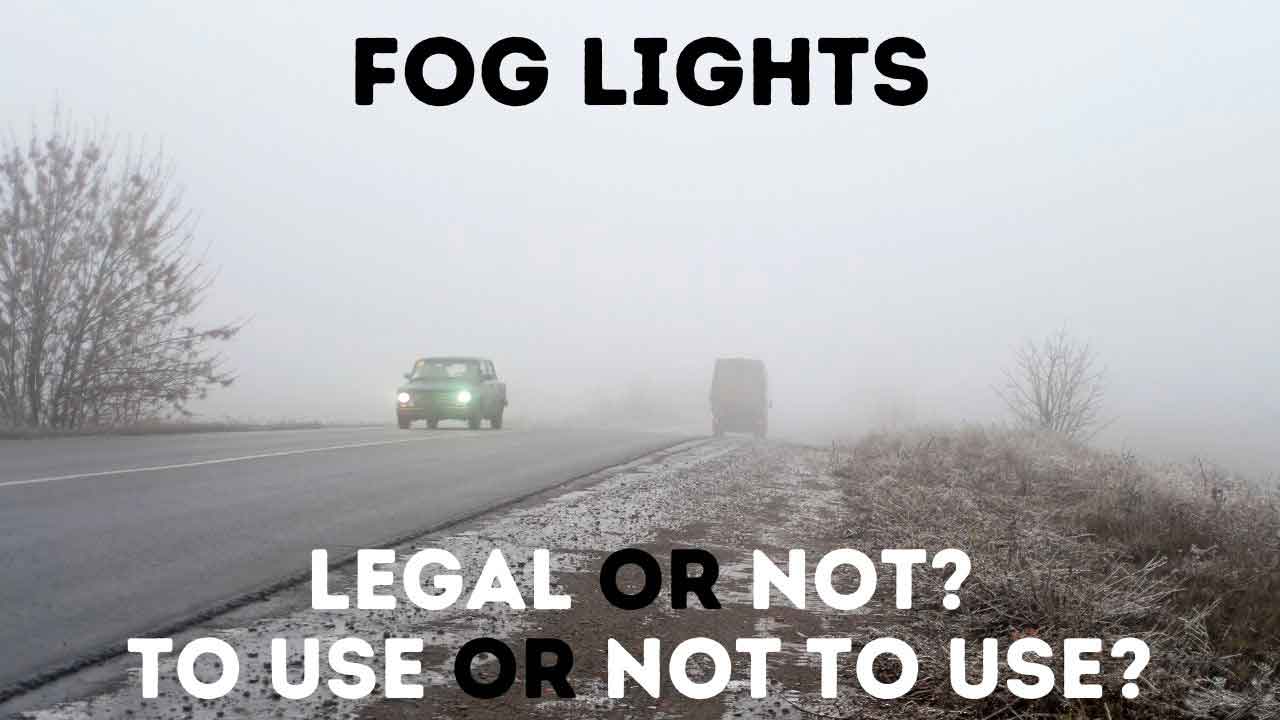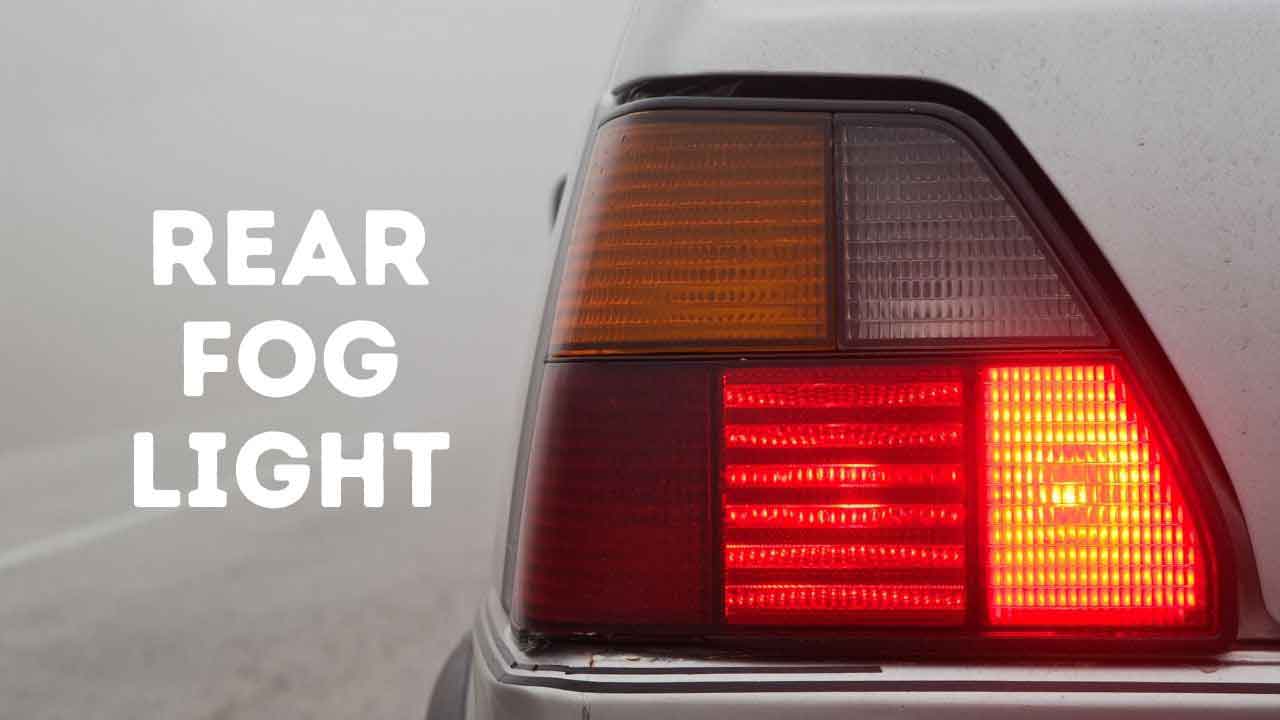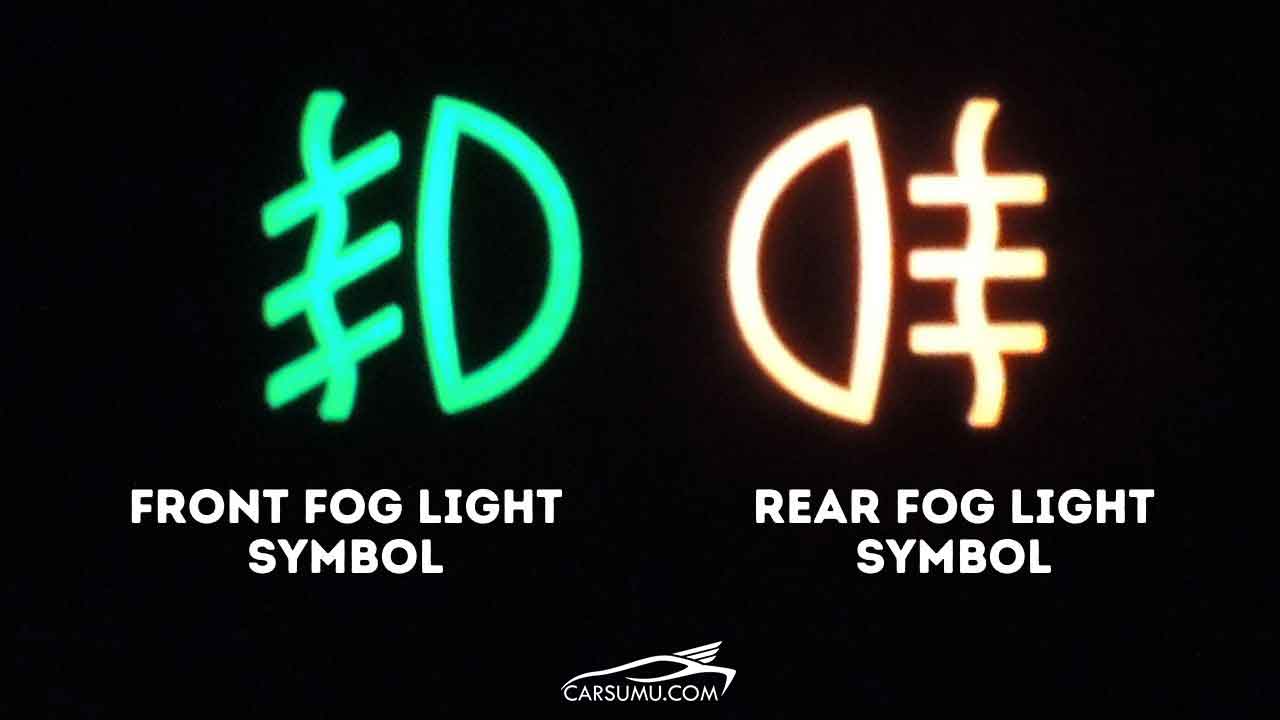Extremely poor visibility is the situation when you need to use fog lights. These are not your traditional headlights and can’t be used in ordinary clear weather conditions.

We have covered the topic in detail with relevant statutory provisions to keep you updated about the legality and other relevant information. Keep reading!
The article includes definitions, the work process of fog lights, illustrations of the fog light symbols, benefits and detriments of using them, and many more!
What are Fog Lights?
Fog lights are for illuminating the road in front of you in hazardous weather conditions. As the name suggests, fog lights appear as lifesavers in foggy weather conditions, heavy rain, dust storms, snow, and other low visibility situations when the traditional high beam or low beam headlights fail to do their job.
According to the Code of Federal Regulations,
Front fog lamp. A lighting device whose beam provides downward illumination forward of the vehicle and close to the ground, and is to be used only under conditions of rain, snow, dust, smoke, or fog. A pair of fog lamps may be used alone, with parking, tail, side, marker, clearance, and identification lamps, or with a lower beam headlamp at the driver’s discretion in accordance with state and local use law.
You should have already seen fog lights in cars, trucks, and SUVs. These are located in the lower end of the front of the car, separated from the typical headlight housing.
How Do Fog Lights Work?
Although fog lights work the same way the traditional headlights work, there are some key differences between them. Traditional headlights are aimed at the front of your vehicle to give you better visibility of the surroundings. But the fog lights are aimed at the road close to your vehicle to escape the dense fog line.
For understanding the fog lights work process, you must know the conditions where fog lights come in handy.
Fog is one of the many situations when you need to find the fog light symbol in the dashboard and turn it on. So, we are describing things keeping the fog into consideration.
When hundreds of thousands of tiny ice crystals or water droplets come close to the surface severely affecting the visibility, we call it a foggy environment. When you light up the droplets or crystals with the typical headlight, the light gets reflected deteriorating the visibility more. To combat that situation, a special type of fog light was needed that can light up the area where the fog is not so dense.
Fog lights are mounted on the lower part of the vehicle and have a sharp cut out to restrict them from illuminating the area above 24 inches off the ground. This is because fog and smog are less dense close to the surface than on the air. So, illuminating that area makes it possible for the driver to see the road and drive safely.
How Do Rear Fog Lights Work?
Although front fog lights are not, rear fog lights along with your traditional brake lights are mandatory in the UK. So, many of our visitors asked- What are the rear fog lights and how do they work?
Rear fog lights are not like the front fog lights except there usage in low visibility situations.
Rear fog lights are almost similar to the tail lights that light up when you press the brake pedal. But they are illuminated manually by turning on the switch in low visibility situations so that the driver following your car can see you despite hazardous weather conditions.
Many people can’t differentiate the rear fog lights from the brake lights as they are similar. However, identifying the rear fog light is easy. Find the rear fog light symbol in the dashboard, turn it on. Now, open the door and go to the rear of the vehicle to see which light is illuminated. Simple, right?
Fog Light Symbol
As we have been asking you several times to find the symbol in the dashboard, you may have been wondering which one is the symbol for fog lights.
The symbol is like your traditional headlight symbol. The difference is that you will see the light beams are crossed by a wave pattern. See how they look-
Do Fog Lights Add Any Benefit?
Fog lights are for low visibility conditions. So, most people who live in places where low visibility is not a common issue find the fog lights as a useless addition to the car.
But I’m saying you! Fog lights work as lifesavers when a sudden dust storm starts or you stuck in heavy rain or snowfall. Visibility sometimes becomes so poor that you can’t see anything. In such situations, fog lights can keep you on track by illuminating the road in front.
Fog light adds a lot of benefits only when you are in situations like this. But on a normal day, there is nothing you can do with them except illuminating them to get a traffic ticket. Joking!
When to use Fog Light?
The usage of fog lights is restricted to some unavoidable weather conditions when you can’t see the road with the traditional headlights.
The situations include but are not limited to- smoky weather, dust storm, smog, fog, heavy rain.
Although fog lights do not work as efficiently in every other situation as they work in foggy weather, they add a little bit of advantage working together with the normal headlights.
However, you may find some situations when turning on the headlights make things worse. You need to use only fog lights in such situations to get things visible.
Rule 226 of the UK Highway Code refers that you must use your headlights when visibility is down to 100 meters or lower and may use fog lamps if the visibility is seriously reduced. While it is optional to use fog lights in low light conditions, it is mandatory to turn them off when visibility improves.
When Not to Use Fog Lights?
You shouldn’t turn your fog lights on when the visibility is unaffected. When the headlights are working fine to get your job done, the fog lights must be turned off.
Using fog lights in normal visibility conditions can lead to a traffic ticket costing you hundreds of bucks.
As fog lights are very bright, typically LED bulbs are used in the fog lights to make things brighter. The glare from the fog light will blind out the oncoming driver making the road unsafe to drive.
Is it Legal to Use Fog Lights?
Before you use the fog lights, make sure to check the local law to be safe. Fog lights are not legal all over the world. While some countries require you to install fog lights in the car, some restrict you from using them.
That’s why we recommend checking the law to be legally clear on the road.
In the UK, two rear fog lights are mandatory while the front fog lights are optional. On the other hand, the Federal Motor Carrier Safety Administration of the USA states that you may equip your vehicle with auxiliary driving lamps or fog lamps to use in unorthodox situations.
However, your front fog lamps must meet “SAE Standard J583 Front Fog Lamp, August 2004” to be legal according to the law.
Australia also has a similar type of legislation to allow fog lights in unusual situations but didn’t make it mandatory.
What Color Fog Lights Are Best?
Two colors are generally legal to use in fog lights, i.e. Amber and white. So, you don’t have many options to go with.
However, between these two colors, manufacturers nowadays prefer going with Amber or selective yellow light as they claim it to be more useful than the white light in situations where fog lights are required.
The claim is not based on scientific study or statistical data, rather an assumption or based on unreliable in-house tests.
But there is an advantage of using amber color or yellow lens in nighttime driving. The color does not produce glare like white LED fog lights. So, this is a safer option as the light output is similar in both colors.
What Do Fog Light Indicator Warning Lights Mean?
The illuminated indicator means the fog light is on. If the visibility is not seriously hampered despite turning on the headlights, you should immediately turn the fog light off.
Fog lights are so bright that they can dazzle oncoming drivers making the road unsafe.
Tips to Drive on Fog, Rain & Storm
While we recommend not driving in adverse weather conditions, it is not always possible to stay home. So, here are some tips that you may apply to drive in poor visibility conditions.
1. See your dashboard lights and find the rear fog light symbol and turn it on. This will help other drivers on the road to locate you better. Don’t use hazard indicator light as it is for emergencies.
2. Wait for clear weather if possible. If you must drive, drive slowly without changing lanes.
3. If fog light bulbs are not doing enough, try low beam headlights along with them to see if the visibility improves.
4. Maintain a safe distance from other vehicles in adverse driving conditions to avoid a collision.
5. Keep an eye on the lane markers to drive straight. Don’t move much towards left or right unnecessarily as it will confuse other drivers on the road.
6. Closely monitor the rearview mirror camera if the camera can produce good quality live video in low light conditions.

